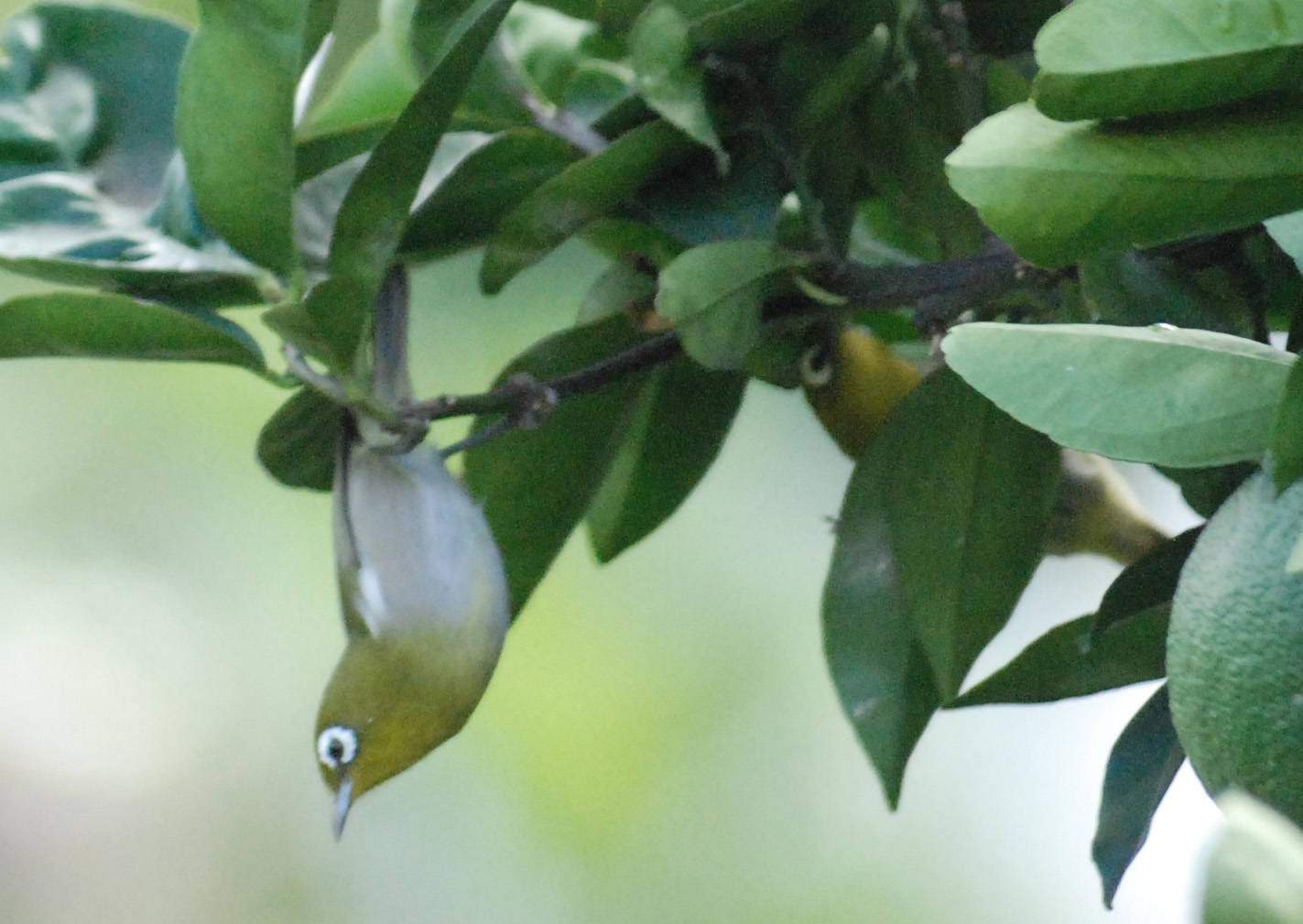|
Green-backed White-eye
The green-backed white-eye (''Zosterops xanthochroa'') is a species of bird in the family Zosteropidae. It is also known as the New Caledonian white-eye. It is endemic to New Caledonia. Taxonomy The green-backed white-eye was described by George Robert Gray in 1858 from a specimen collected in Nu. The relationships between this species and other white-eyes are uncertain, but it may form a superspecies with the small Lifou white-eye, also from New Caledonia, the Fiji white-eye and the yellow-fronted white-eye (from Vanuatu). This speculative proposal is based upon the shared yellow underparts and their living in the same general region. Distribution and habitat The green-backed white-eye is endemic to the islands of New Caledonia, where it is found on Grande Terre, the main island, the smaller L'Île-des-Pins, as well as Maré in the Loyalty Islands. It is replaced on Lifou by the small and large Lifou white-eyes. It is primarily a bird of primary rainforest, from sea level up, ... [...More Info...] [...Related Items...] OR: [Wikipedia] [Google] [Baidu] |
George Robert Gray
George Robert Gray FRS (8 July 1808 – 6 May 1872) was an English zoologist and author, and head of the ornithological section of the British Museum, now the Natural History Museum, in London for forty-one years. He was the younger brother of the zoologist John Edward Gray and the son of the botanist Samuel Frederick Gray. George Gray's most important publication was his ''Genera of Birds'' (1844–49), illustrated by David William Mitchell and Joseph Wolf, which included 46,000 references. Biography He was born in Little Chelsea, London, to Samuel Frederick Gray, naturalist and pharmacologist, and Elizabeth (née Forfeit), his wife. He was educated at Merchant Taylor's School. Gray started at the British Museum as Assistant Keeper of the Zoology Branch in 1831. He began by cataloguing insects, and published an ''Entomology of Australia'' (1833) and contributed the entomogical section to an English edition of Georges Cuvier's ''Animal Kingdom''. Gray described many spec ... [...More Info...] [...Related Items...] OR: [Wikipedia] [Google] [Baidu] |
Vulnerable Species
A vulnerable species is a species which has been Conservation status, categorized by the International Union for Conservation of Nature as being threatened species, threatened with extinction unless the circumstances that are threatened species, threatening its survival and reproduction improve. Vulnerability is mainly caused by habitat loss or destruction of the species' home. Vulnerable habitat or species are monitored and can become increasingly threatened. Some species listed as "vulnerable" may be common in captivity (animal), captivity, an example being the military macaw. There are currently 5196 animals and 6789 plants classified as Vulnerable, compared with 1998 levels of 2815 and 3222, respectively. Practices such as cryoconservation of animal genetic resources have been enforced in efforts to conserve vulnerable breeds of livestock specifically. Criteria The International Union for Conservation of Nature uses several criteria to enter species in this category. A tax ... [...More Info...] [...Related Items...] OR: [Wikipedia] [Google] [Baidu] |
Birds Described In 1859
Birds are a group of warm-blooded vertebrates constituting the class Aves (), characterised by feathers, toothless beaked jaws, the laying of hard-shelled eggs, a high metabolic rate, a four-chambered heart, and a strong yet lightweight skeleton. Birds live worldwide and range in size from the bee hummingbird to the ostrich. There are about ten thousand living species, more than half of which are passerine, or "perching" birds. Birds have whose development varies according to species; the only known groups without wings are the extinct moa and elephant birds. Wings, which are modified forelimbs, gave birds the ability to fly, although further evolution has led to the loss of flight in some birds, including ratites, penguins, and diverse endemic island species. The digestive and respiratory systems of birds are also uniquely adapted for flight. Some bird species of aquatic environments, particularly seabirds and some waterbirds, have further evolved for swimming. Birds ... [...More Info...] [...Related Items...] OR: [Wikipedia] [Google] [Baidu] |
Endemic Birds Of New Caledonia
This article is one of a series providing information about endemism among birds in the world's various zoogeographic zones. For an overview of this subject, see Endemism in birds. Patterns of endemism New Caledonia has a single endemic family, the Rhynochetidae. Endemic Bird Areas Birdlife International has defined the whole of New Caledonia—the main island of Grande Terre, the Loyalty Islands (Ouvéa, Lifou and Maré), the Île des Pins and other smaller surrounding islands—as an Endemic Bird Area (EBA). List of species The following is a list of species endemic to New Caledonia. Except where indicated, the species is only found on Grande Terre. * White-bellied goshawk * † Powerful goshawk * † Gracile goshawk * New Caledonian rail * † New Caledonian gallinule * Kagu * †Lowland kagu * Cloven-feathered dove * New Caledonian imperial pigeon * †New Caledonian ground dove * New Caledonian lorikeet * Horned parakeet - found on Grande Terre and Ouvéa * New Caledonia ... [...More Info...] [...Related Items...] OR: [Wikipedia] [Google] [Baidu] |
Zosterops
''Zosterops'' (meaning "eye-girdle") is a genus of passerine birds containing the typical white-eyes in the white-eye family Zosteropidae. The genus has the largest number of species in the white-eye family. They occur in the Afrotropical, Indomalayan, and Australasian realms. Typical white-eyes have a length of between . Their most characteristic feature is a conspicuous white feather ring around the eye, though some species lack it. The species in this group vary in the structural adaptations of the tongue. The ''Zosterops'' 'griseotinctus''group is an example of a "great speciator" inhabiting a vast area and showing a remarkable morphological differentiation on islands, some of which maybe as close as apart. Systematics The genus ''Zosterops'' was introduced by the naturalists Nicholas Vigors and Thomas Horsfield in 1827. The name combines the Ancient Greek words ''zōstēros'' "belt" or "girdle" and ''ōpos'' "eye". The type species was designated as the Malagasy white-ey ... [...More Info...] [...Related Items...] OR: [Wikipedia] [Google] [Baidu] |



.jpg)